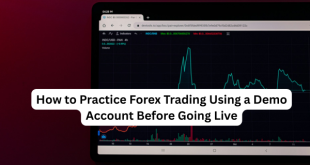When it comes to making money in forex trading, understanding technical indicators is essential. Two of the most widely used and beginner-friendly indicators are the Relative Strength Index (RSI) and the Moving Average Convergence Divergence (MACD). These tools can help you time entries, confirm trends, and avoid false signals. In this post, we’ll break down how to use them to improve your trading results.
What Are Technical Indicators?
Technical indicators are mathematical calculations based on price, volume, or open interest that traders use to forecast future price movements. They help identify trend strength, momentum, overbought/oversold conditions, and potential reversals.
1. What is RSI (Relative Strength Index)?
The RSI measures the speed and change of price movements, ranging from 0 to 100. It’s a momentum oscillator that helps determine if a currency pair is overbought or oversold.
- RSI > 70 → Overbought (possible sell signal)
- RSI < 30 → Oversold (possible buy signal)
📈 How to Use RSI to Make Money:
- Look for Divergence: If the price makes a new high, but RSI doesn’t, it could signal a trend reversal.
- Combine with Support/Resistance: When RSI is overbought at a resistance level, it’s a strong sell signal.
- Use in Ranging Markets: RSI works well when the market is sideways — buy at RSI < 30, sell at RSI > 70.
2. What is MACD (Moving Average Convergence Divergence)?
The MACD is a trend-following momentum indicator that shows the relationship between two moving averages (usually the 12-period and 26-period EMAs).
- MACD Line: Difference between 12-EMA and 26-EMA
- Signal Line: 9-day EMA of the MACD Line
- Histogram: Difference between the MACD and Signal Line
📊 How to Use MACD to Make Money:
- MACD Crossover: When the MACD line crosses above the signal line → buy. When it crosses below → sell.
- Zero Line Crossover: If MACD moves above zero, it signals a bullish trend. Below zero indicates a bearish trend.
- Combine with RSI: Confirm MACD signals with RSI to filter out false moves.
Pro Tips for Using RSI and MACD Together
- Double Confirmation: Only enter trades when both RSI and MACD agree (e.g., RSI < 30 + MACD crossover = buy).
- Avoid Whipsaws: Use them on higher timeframes (1H, 4H, Daily) to reduce noise.
- Don’t Use Alone: Indicators are tools, not guarantees. Combine with price action, trendlines, or news analysis.
Final Thoughts
RSI and MACD are powerful indicators that can help you spot trends, time your entries, and avoid emotional trading. Like any tool, they work best when combined with a solid risk management plan and trading discipline.
If you’re serious about making money with forex, start by mastering these two indicators on a demo account. With practice, you’ll begin to understand how they react in different market conditions—and that’s where the profits begin.
Ready to trade smarter?
Start applying RSI and MACD in your strategy and track the results. Small improvements in your decision-making can lead to big gains over time.
 UBUCH ubuch | Honest Tech Reviews & Tutorials for Everyone
UBUCH ubuch | Honest Tech Reviews & Tutorials for Everyone




